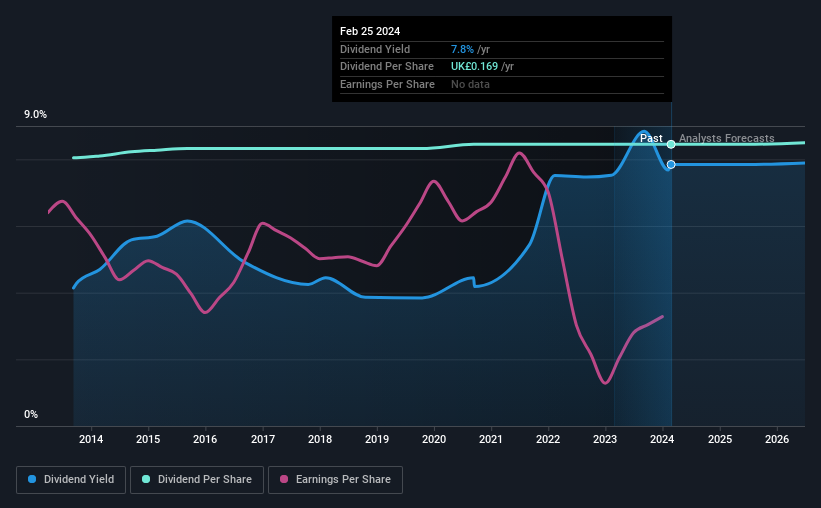Dividend Investors: Don't Be Too Quick To Buy Ashmore Group Plc (LON:ASHM) For Its Upcoming Dividend
Ashmore Group Plc (LON:ASHM) is about to trade ex-dividend in the next 3 days. The ex-dividend date occurs one day before the record date which is the day on which shareholders need to be on the company's books in order to receive a dividend. The ex-dividend date is important because any transaction on a stock needs to have been settled before the record date in order to be eligible for a dividend. Accordingly, Ashmore Group investors that purchase the stock on or after the 29th of February will not receive the dividend, which will be paid on the 2nd of April.
The company's next dividend payment will be UK£0.048 per share, and in the last 12 months, the company paid a total of UK£0.17 per share. Based on the last year's worth of payments, Ashmore Group stock has a trailing yield of around 7.8% on the current share price of UK£2.154. Dividends are an important source of income to many shareholders, but the health of the business is crucial to maintaining those dividends. So we need to investigate whether Ashmore Group can afford its dividend, and if the dividend could grow.
Check out our latest analysis for Ashmore Group
If a company pays out more in dividends than it earned, then the dividend might become unsustainable - hardly an ideal situation. Ashmore Group paid out 116% of profit in the past year, which we think is typically not sustainable unless there are mitigating characteristics such as unusually strong cash flow or a large cash balance.
When a company pays out a dividend that is not well covered by profits, the dividend is generally seen as more vulnerable to being cut.
Click here to see the company's payout ratio, plus analyst estimates of its future dividends.
Have Earnings And Dividends Been Growing?
Companies with falling earnings are riskier for dividend shareholders. If earnings decline and the company is forced to cut its dividend, investors could watch the value of their investment go up in smoke. With that in mind, we're discomforted by Ashmore Group's 8.0% per annum decline in earnings in the past five years. When earnings per share fall, the maximum amount of dividends that can be paid also falls.
Many investors will assess a company's dividend performance by evaluating how much the dividend payments have changed over time. Ashmore Group's dividend payments are effectively flat on where they were 10 years ago. When earnings are declining yet the dividends are flat, typically the company is either paying out a higher portion of its earnings, or paying out of cash or debt on the balance sheet, neither of which is ideal.
Final Takeaway
Should investors buy Ashmore Group for the upcoming dividend? Earnings per share are in decline and Ashmore Group is paying out what we feel is an uncomfortably high percentage of its profit as dividends. Generally we think dividend investors should avoid businesses in this situation, as high payout ratios and declining earnings can lead to the dividend being cut. All things considered, we're not optimistic about its dividend prospects, and would be inclined to leave it on the shelf for now.
With that in mind though, if the poor dividend characteristics of Ashmore Group don't faze you, it's worth being mindful of the risks involved with this business. For example, we've found 2 warning signs for Ashmore Group that we recommend you consider before investing in the business.
If you're in the market for strong dividend payers, we recommend checking our selection of top dividend stocks.
Have feedback on this article? Concerned about the content? Get in touch with us directly. Alternatively, email editorial-team (at) simplywallst.com.
This article by Simply Wall St is general in nature. We provide commentary based on historical data and analyst forecasts only using an unbiased methodology and our articles are not intended to be financial advice. It does not constitute a recommendation to buy or sell any stock, and does not take account of your objectives, or your financial situation. We aim to bring you long-term focused analysis driven by fundamental data. Note that our analysis may not factor in the latest price-sensitive company announcements or qualitative material. Simply Wall St has no position in any stocks mentioned.

 Yahoo Finance
Yahoo Finance 
